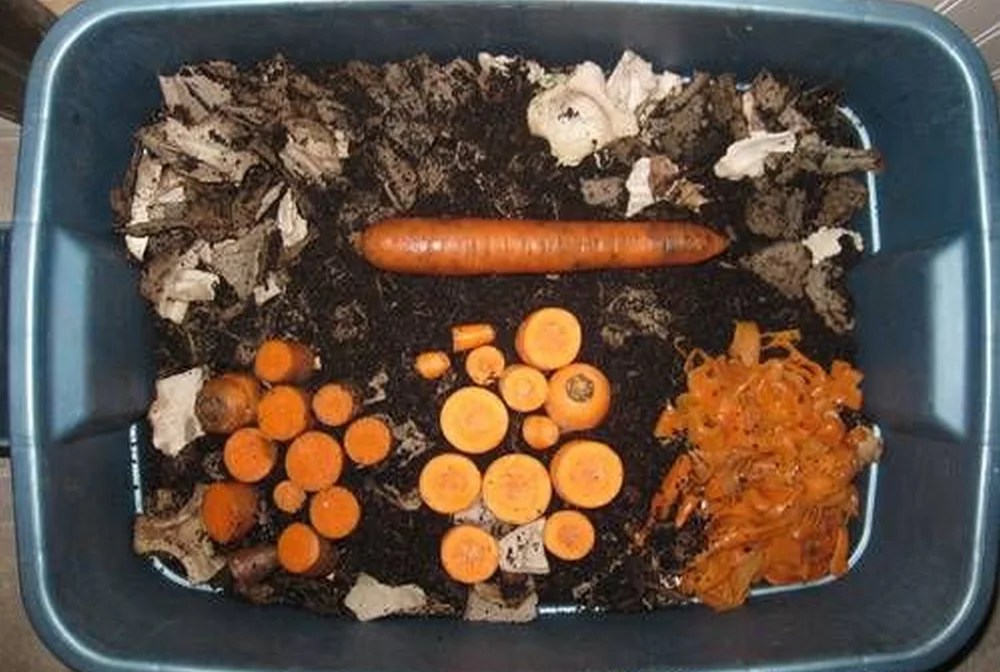Diy Worm Composting Bin - Start your diy worm farm by sourcing your worms and building a worm bin for your little wriggling composters. It is also possible to purchase worm composting bins. You will want to put your bin in an indoor space as you do not want the worms to freeze in. By the end, you’ll have a functional and efficient setup that will have your worms happily munching away on your organic waste,. Simply construct the 2×4 frame and nail or staple the hardware cloth (metal screen) on the bottom of each tray. Reuse an old dresser drawer or fish tank, build a box out of wood or find/buy a. To make the simplest worm composting bin you will first need to gather your tools and supplies.
Reuse an old dresser drawer or fish tank, build a box out of wood or find/buy a. Worms not only recycle fruit and vegetable scraps, but they can also recycle toilet paper rolls, newspaper, egg cartons, etc., and transform them into a nutrient rich compost that you can then add to your garden, lawn and houseplants. Simply construct the 2×4 frame and nail or staple the hardware cloth (metal screen) on the bottom of each tray. Castings from this worm bin are a rich garden amendment that will make your garden grow!
Making a worm bin is something you can easily do, and with the right materials, you’ll be able to harvest worm castings in no time! It's simple to do and only requires three buckets, some kitchen scraps, worms of course, and a bit of elbow grease. Simply construct the 2×4 frame and nail or staple the hardware cloth (metal screen) on the bottom of each tray. You can build a diy worm farm that will produce worm humus and juice that can be used to fertilize your plants. As the worms eat kitchen scraps, they make free castings to supplement compost and soil in your garden.
Learn how to make a worm bin using a rubber storage container, sheets of newspaper and kitchen scraps. The wire mesh has 1/2″ squares. It's simple to do and only requires three buckets, some kitchen scraps, worms of course, and a bit of elbow grease. Discover the ultimate method to start & rotate your worm tower for maximum worm casting production!
Want To Learn How To Vermicompost?
Build a diy worm composter in just 30 minutes. Use untreated wood planks—do not use treated wood as chemicals can harm the worms. Castings from this worm bin are a rich garden amendment that will make your garden grow! You will want to put your bin in an indoor space as you do not want the worms to freeze in.
This Is An Easy Diy Tote Bin Worm Composter That Requires Just 15 Minutes Of Assembly Using Items You Probably Already Have Around The House.
Vermicompost, is composting utilizing various species of worms, specifically red wigglers, white worms, and earthworms creating the heterogeneous mixture of decomposing vegetable or food waste, bedding materials, and pure vermicast produced during the course of normal vermiculture operations. Learn how to make a worm bin using a rubber storage container, sheets of newspaper and kitchen scraps. You can even make your own worm bin with materials you have lying around in the house. Reuse an old dresser drawer or fish tank, build a box out of wood or find/buy a.
The Wire Mesh Has 1/2″ Squares.
Earthworms have been ploughing soil since the beginning of time. Start your diy worm farm by sourcing your worms and building a worm bin for your little wriggling composters. Below are instructions on how to build one kind of worm composting bin designed to be used inside. In this article, we will guide you through the process of building your own worm compost bin, step by step.
These Are Made From Materials That Do Not Have Antimicrobial Properties To Allow Microorganisms To Grow.
You’ll also need a simple lid to place on top. Discover how to make a simple but effective diy worm composting bin, saving you $100 or more compared to commercial vermiculture systems. Want to start worm composting? It's simple to do and only requires three buckets, some kitchen scraps, worms of course, and a bit of elbow grease.
These are made from materials that do not have antimicrobial properties to allow microorganisms to grow. Vermicomposting (worm based) this is a more compact form of composting that uses worms to break down the materials (as opposed to heat). Reuse an old dresser drawer or fish tank, build a box out of wood or find/buy a. Middle is partially composted for outdoor use (10 to 12 hours). Worm bins, also known as worm composters, are containers with holes for ventilation and moisture.






